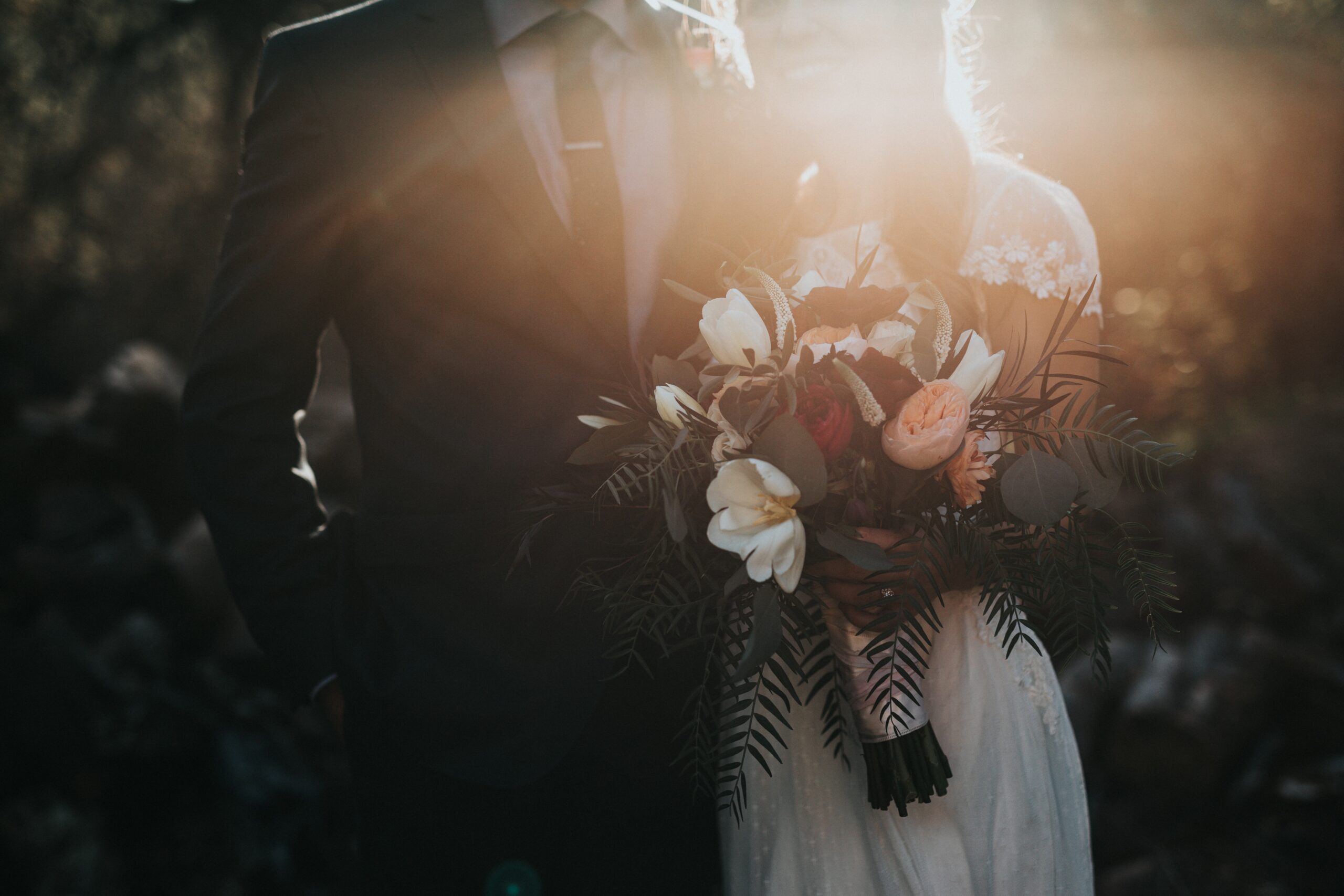Wedding Music Glossary
(Courtesy hemingwaycool.com)
A Cappella: This musical terminology describes a song consisting entirely of vocals without any other instruments. A Cappella groups are often comprised of four or more vocalists, and may be able to make additions to their repertoire (see below) for your wedding.
Arrangement: Define what this is. If you want your string quartet to play Lady Gaga, they’ll need to transfer the piano sheet music over to violin sheet music first. If your hired musicians can do this they will, but they need advance notice, and not all musicians will be able to do this. Ask before you booking if there’s a song or a few songs you need them to play.
Background Music: Define what this is. This is essential but easily forgotten. There will be natural lulls during the wedding day, moments during the ceremony and the reception where some light or instrumental music can keep the atmosphere going. Remember to include some background music when you’re planning the day.
Bridal Processional/March: These are both names for perhaps the most important piece of music during a wedding; the names refer to the song played when the bride and her party (the father and sometimes the mother of the bride) walk down the aisle. The most well-known example is ‘Here Comes the Bride’, and the song begins when the bride first enters. However, there are a wide variety of songs that can be chosen for this purpose.
Cellist: This musician plays a cello, a large stringed instrument. They will bring much of their own equipment, but do remember a chair for them, and bear in mind that a cellist will require more space than a violinist or a flutist. You may also wish to provide food and drink too; discuss this with the cellist when you book them.
Chamber Music: This refers to a small group of instruments, typically violins, flutes and other instruments you would find in an orchestra, played by musicians. This was originally done within a chamber, or a medium sized room, hence the name. This is ideal for weddings as it captures the essence of an orchestra. However, it doesn’t require the extensive resources including space, sustenance and overall cost to incorporate your musicians into your day.
Commission: A musician may create one or a number of musical compositions at the request of an engaged couple for a fee. This is a commission, and it can be expensive, but it’s a wonderful and unique opportunity for any couple to truly create “your song”.
Cue: This is the timing for the musicians to begin playing a certain song during the wedding. It is vital to get this right for the bridal processional, but there are plenty of other cues required, especially during the reception. These include the first dance, the cutting of the cake and the announcement that food is ready. Discuss these with your DJ or musicians in advance.
Entrance Processional/March: These are alternative names for the bridal processional (discussed above).
Exit Music: This is also known as the recessional (see below). Define what this is.
First Dance: At the reception, the married couple are the first and only members on the dance floor. They dance to a song they’ve chosen. It’s traditionally a slow song, but modern weddings are much more exciting. Check out YouTube for inspiration, as there have are some amazing examples of first dance choreography performed at weddings across the world.
Harpist: Define what this is. This musician requires a large amount of space, as harps are large structures. Discuss all the details with them when you book and ensure they can play the songs you require.
Hymn: This is a religious song, usually sung by the whole congregation. If you are wedding in a church, your priest, minister or other religious figure will discuss any hymns with you beforehand. They’ll also discuss the plan for the whole ceremony, including prayers and such.
Interlude: This is another name for the background music (see above), except that it refers specifically to music played during the wedding ceremony rather than the reception. Natural lulls will occur during the ceremony, when there is no speech and only movement. Depending on whether you’re having a church wedding or not, such moments could include during the lighting of a unity candle, in moments of prayer or meditation and during the ring exchange. Classical pieces and instrumental music in general are great ways to fill the silence, though you can choose music from any genre you like. Just remember to keep it upbeat!
Live band: A group of musicians who will perform songs at your reception, and some choose to have live bands during the ceremony too; usually, there will be a singer, guitarist and a drummer as a minimum. This is a traditional choice, but you can mix it up by opting for a rock, folk, jazz or pop band. There are many options, including cover and tribute bands, depending on your and your groom’s tastes. Plan at least six months in advance to guarantee getting the band of your choice.
Musical Composition: This phrase has been used to mean any aspect in the creation of music, but the only meaning that is relevant to your wedding plans is the original definition. Composers such as Bach and Beethoven famously received commissions (see above) to create an original piece, or a number of pieces, of music for a person or an event. Similarly, modern couples can approach all kinds of musicians and groups in order to discuss the musical composition/s you desire. Such services generally provide the sheet music, so you would still need to hire musicians to play them live at the ceremony. However, some online companies will send you the mp3 files containing the music for you to play and keep forever.
Organist: This is a musician who is specially trained to play the organ (define what an organ is). Organists are much rarer than other musicians, such as guitarists, cellists or pianists, because organs are such large instruments. Due to this, some organs are permanently installed in churches. Plan as far ahead as possible if you want to guarantee you can book an organist for your planned date.
Prelude: This refers to the background music played before the wedding ceremony commences, as the guests seat themselves.
Postlude: This music is played after the wedding ceremony, and continues until each guest has left the ceremony. Ensure this piece of music is long enough, perhaps 15 or 20 minutes long, as it’s easy to underestimate how long it will take everyone to leave the room. You can use more than one song, but it doesn’t have to be as subtle as the other songs during the wedding ceremony. A good idea is to begin your postlude with a cheery, upbeat song that everyone will know, and then use instrumental music for the rest of the postlude.
Recessional: The recessional refers to the first song of the postlude.
Repertoire: The selection of songs a band or musician will play. Always ensure that you have checked your song choices with your musicians; the last thing you want is to find out they don’t play your song moments before you want them to.
Silent Disco: This is a fantastic phenomenon that has popped up in recent years. Each guest wears wireless earphones during the reception dance and they can usually choose between one of two playlists, allowing them to listen to the music of their choice. You can hire a silent disco from a specialist company, though some DJs will offer this service as part of their package. You’ll need space for the transmitter equipment and if you’re offered a sound engineer, it’s wise to hire them too in order to make the process as easy as possible.
Solo: In a wedding, this refers specifically to a song performed by one singer, known as the soloist. There is often an instrumental accompaniment, but the focus is on the singer. This can be a hired professional or a close friend, if you know someone who is a talented singer.






